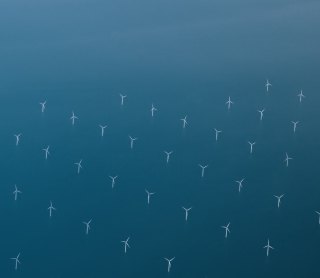On January 12, 2024, the Bureau of Ocean Energy Management (BOEM) released the Notice of Availability regarding the draft Programmatic Environmental Impact Statement (PEIS) concerning offshore wind energy development in the New York Bight (NY Bight), encompassing areas offshore New York and New Jersey. This marks the official commencement of a 45-day comment period on BOEM’s inaugural regional assessment of mitigation strategies for numerous offshore renewable energy lease zones.
BOEM plans to streamline environmental review processes for six lease areas (OCS-A 0537, 0538, 0539, 0541, 0542 and 0544) in the NY Bight by developing the PEIS, aiming to minimize redundancy in subsequent construction and operation plan (COP) reviews. This approach is expected to expedite decision-making by focusing future COP-specific analyses on project-specific impacts not covered in the PEIS. Each COP will undergo evaluation to determine the extent to which the PEIS can be referenced, with additional analysis conducted as needed.
While BOEM conducted a public scoping period from July 15 to August 30, 2022, receiving 43 comments from various stakeholders, the PEIS does not directly review or approve any offshore wind development activities.

USE OF REPRESENTATIVE PROJECT DESIGN ENVELOPE
BOEM prepared the draft PEIS for the NY Bight lease areas using a representative project design envelope (RPDE), which encompasses various parameters representing a hypothetical offshore wind project. This approach facilitates the analysis of potential impacts from any future projects in the region and enables tiering in subsequent COP-specific NEPA analyses (see Appendix C of the PEIS.) Additionally, the PEIS evaluates cumulative impacts from the development of all six lease areas, providing a comprehensive assessment of the region as a whole.
To create the RPDE, BOEM collaborated with stakeholders including NY Bight lessees, offshore wind developer associations, research institutions, and state governments, ensuring the inclusion of realistic parameters reflecting potential development scenarios. Parameters such as turbine number, foundation type, height, and cable lengths were considered, with a focus on assessing maximum-case scenarios to understand potential environmental impacts comprehensively. Notably, onshore component parameters were excluded from the RPDE due to jurisdictional constraints, with emphasis placed on offshore infrastructure configurations pending COP submissions. (see Appendix D of the PEIS.)
PROGRAMMATIC AVOIDANCE, MITIGATION, MONITORING, AND MINIMIZATION
The draft PEIS outlines programmatic avoidance, mitigation, monitoring, and minimization (AMMM) measures proposed by BOEM as conditions for COP approval in the NY Bight, unless COP-specific NEPA analysis deems them unnecessary or ineffective. Upon issuing the record of decision (ROD) for the PEIS, BOEM will commit to adopting specific AMMM measures. The draft PEIS presents three alternatives:
- A no-action scenario, serving as the baseline for analysis;
- Deferral of AMMM measure adoption until COP-specific NEPA analyses for NY Bight projects;
- Adoption of proposed action, implementing AMMM measures to address potential impacts
WHAT DOES THIS MEAN FOR MY PROJECTS?
The PEIS stands as a crucial initiative aimed at improving decision-making efficiency, particularly in light of delays observed in the permitting schedules for offshore wind projects already undergoing BOEM review. This updated regional strategy represents a progression in BOEM’s process, aimed at expediting decisions that promote offshore wind energy development, while concurrently protecting marine ecosystems, minimizing conflicts with other ocean activities, and preserving marine life.
LEARN MORE AND GET INVOLVED
Appendix G of the PEIS outlines the Alternative Mitigation Measures (AMMs) that BOEM is considering as potential conditions for COP approval. Some of these measures are unique for COP terms, while others fall outside BOEM’s jurisdiction. Stakeholders are encouraged to provide input on these proposed measures and their effectiveness in mitigating impacts. Specific feedback is sought on compensatory mitigation approaches, including proposals for financial contributions toward third-party managed funds addressing historic property and fishermen’s income loss.
BOEM will host three in-person and two virtual public meetings to gather feedback on the draft PEIS, with public comments accepted until February 26, 2024. The final PEIS is expected to be published in fall 2024.
Submit a public comment by February 26, 2024 at FederalRegister.gov
SWCA CAN HELP
SWCA is ready to help our clients draft public comments in response to this Notice of Availability. Please reach out to any of our nationwide experts below or your current SWCA project manager to get started today.
Ross [dot] Pilotte [at] swca [dot] com (Ross Pilotte | Principal Project Manager)
Stephanie [dot] Hudgins [at] swca [dot] com (Stephanie Hudgins | Vice President - Power & Energy)
